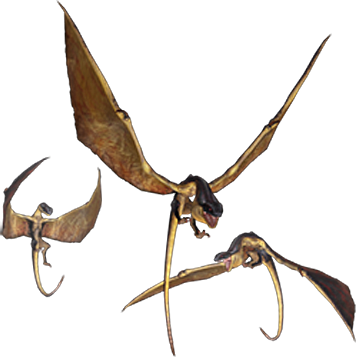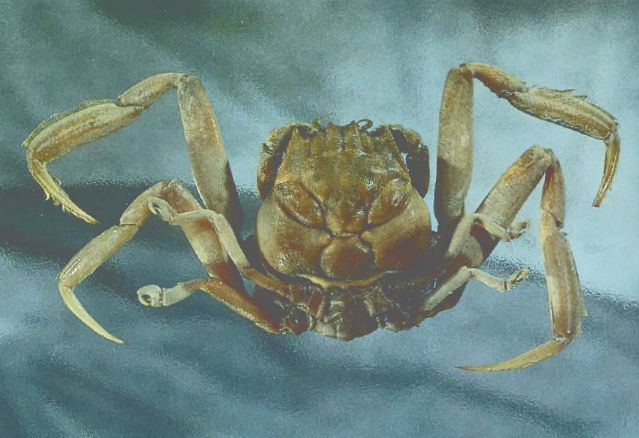evil solrac v3.0
Member
∀ Narayan;113893777 said:Indeed.
We do plenty of cool shit already.
what? our brains? big whoop.
∀ Narayan;113893777 said:Indeed.
We do plenty of cool shit already.
What's amazing that centuries of caterpillars were observing how animals responded to snakes, and then decided to take it up as a form of defense.
That's some amazingly complex stuff right there - for that trait to be passed on from generation to generation genetically.
Usually by accident and chance.
No...they didn't. Noone was deciding anything. Those with the snake head simply didn't get eaten as often, thus passing on thier genes, further refining the snake head look over generations.
Not to single you out though, but this thread is giving me a headache. I didn't know so many people don't know how basic evolution works, especially on GAF.
Confirms gaf is an American website after allNo...they didn't. Noone was deciding anything. Those with the snake head simply didn't get eaten as often, thus passing on thier genes, further refining the snake head look over generations. Birds, for example, didn't choose to grow out wings all those eons ago and start flying. It just so happen that those that started evading predators quicker survived, passing on their genes.
Not to single you out though, but this thread is giving me a headache. I didn't know so many people don't know how basic evolution works, especially on GAF.
I'm sure people that are suggesting that the animals 'decided' to look like a snake are joking, surely you guys must understand that.
I'm not completely convinced that something this specific could happen randomly though, it's slightly too unlikely for my tastes. I'm sure that's what a lot of other people are insinuating with those comments.
They look like this and there are binders for them.

Why can't humans do cool shit like this?
Humans gave up on evolution through natural selection when they invented Medicine.
Caterpillars are evolving into snakes confirmed.
I for one welcome our new flying snake overlords.

I'm sure people that are suggesting that the animals 'decided' to look like a snake are joking, surely you guys must understand that.
I'm not completely convinced that something this specific could happen randomly though, it's slightly too unlikely for my tastes. I'm sure that's what a lot of other people are insinuating with those comments.
That is amazing! It's almost hard to believe that just because it is being hunted, it grows a near identical face of the hunter.
Gaborn would love this.
It's funny so many people don't see the obvious.Real life Pokemon, I wonder what his first form was.


How does the caterpillar know how to imitate a Snake and strike though?
It's "hard to believe" because it isn't true. The caterpillar doesn't "grow" a snake head in response to being hunted. The ones that happen to have snake-like markings survive and pass their traits to their offspring.
How does the caterpillar know how to imitate a Snake and strike though?
Wow it evolved to look like a Pokemon? How does nature know that show exists?It's funny so many people don't see the obvious.


Caterpie is based on a swallowtail caterpillar, another snake mimic.
Guided evolution is amazing isn't it
How does the caterpillar know how to imitate a Snake and strike though?

Its stuff like this that makes it so much easier to say 'god made them that way.'Nature never ceases to amaze. The biggest question I have is - how do you evolve THAT characteristic?
They look like this and there are binders for them.

Its stuff like this that makes it so much easier to say 'god made them that way.'
Mimicry is still pretty wacky. You can look at a mudskipper and see the links in evolution. How does a species evolve into looking identical to another species? did a caterpillar one day by chance mutate a spot and then a million chances later made few more spots shaped to look like a snake/branch etc? And thats purely looks, some of the symbiotic relationships that species have with each other is even more crazy.For those that don't understand evolution by natural selection, possibly. Even if we didn't have the theory of evolution it still wouldn't be an appropriate response to say 'God did it', as there is no (compelling) evidence to suggest such a thing. These sorts of 'unusual' appearances are exactly what you would expect to see though given population genetics.
Mimicry is still pretty wacky. You can look at a mudskipper and see the links in evolution. How does a species evolve into looking identical to another species? did a caterpillar one day by chance mutate a spot and then a million chances later made few more spots shaped to look like a snake/branch etc? And thats purely looks, some of the symbiotic relationships that species have with each other is even more crazy.
Theres the old concept of evolution where animals would evolve out of need(ie a giraffe would evolve a longer neck to reach higher branches). Even that seems to make more sense in this case..
I don't believe it, seriously...how?
That moth must be terrifying....
Mimicry is still pretty wacky. You can look at a mudskipper and see the links in evolution. How does a species evolve into looking identical to another species? did a caterpillar one day by chance mutate a spot and then a million chances later made few more spots shaped to look like a snake/branch etc? And thats purely looks, some of the symbiotic relationships that species have with each other is even more crazy.
Mimicry is still pretty wacky. You can look at a mudskipper and see the links in evolution. How does a species evolve into looking identical to another species?
did a caterpillar one day by chance mutate a spot and then a million chances later made few more spots shaped to look like a snake/branch etc?
And thats purely looks, some of the symbiotic relationships that species have with each other is even more crazy.
Theres the old concept of evolution where animals would evolve out of need(ie a giraffe would evolve a longer neck to reach higher branches). Even that seems to make more sense in this case..
The same way everything else evolves.
Old concept of evolution? Or wrong understanding of evolution? The artiodactyla with shorter necks couldn't reach as much food, so died off. The ones with longer necks could, so their genes were passed on. Again, repeat for millions of years.
